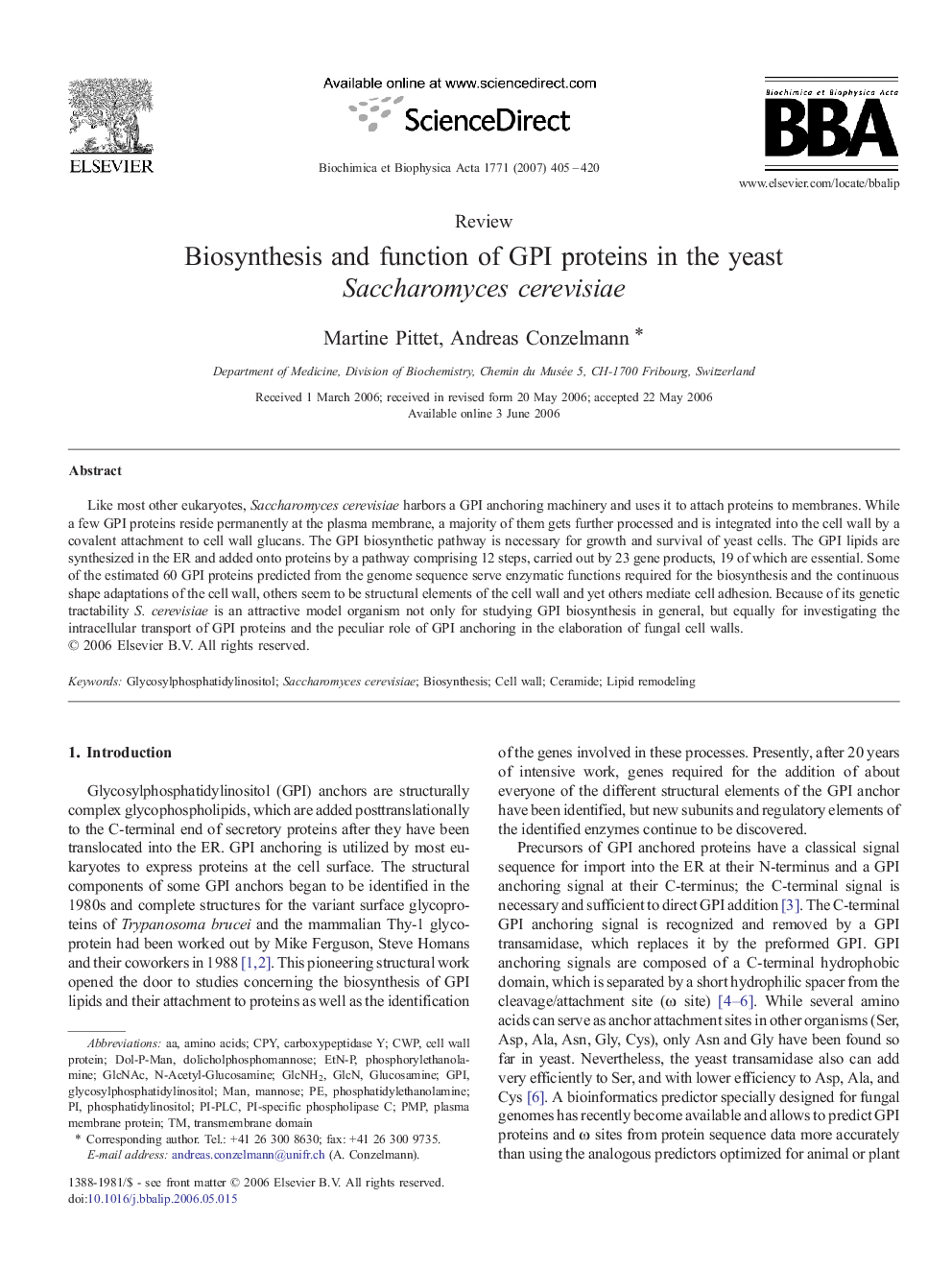| Article ID | Journal | Published Year | Pages | File Type |
|---|---|---|---|---|
| 1950074 | Biochimica et Biophysica Acta (BBA) - Molecular and Cell Biology of Lipids | 2007 | 16 Pages |
Abstract
Like most other eukaryotes, Saccharomyces cerevisiae harbors a GPI anchoring machinery and uses it to attach proteins to membranes. While a few GPI proteins reside permanently at the plasma membrane, a majority of them gets further processed and is integrated into the cell wall by a covalent attachment to cell wall glucans. The GPI biosynthetic pathway is necessary for growth and survival of yeast cells. The GPI lipids are synthesized in the ER and added onto proteins by a pathway comprising 12 steps, carried out by 23 gene products, 19 of which are essential. Some of the estimated 60 GPI proteins predicted from the genome sequence serve enzymatic functions required for the biosynthesis and the continuous shape adaptations of the cell wall, others seem to be structural elements of the cell wall and yet others mediate cell adhesion. Because of its genetic tractability S. cerevisiae is an attractive model organism not only for studying GPI biosynthesis in general, but equally for investigating the intracellular transport of GPI proteins and the peculiar role of GPI anchoring in the elaboration of fungal cell walls.
Keywords
PMPDol-P-ManCarboxypeptidase YPI-PLCGlcNAcCPYCWPGPiN-Acetyl-GlucosamineAmino acidsLipid remodelingBiosynthesistransmembrane domainCell wallSaccharomyces cerevisiaeceramidephosphatidylinositolphosphatidylethanolaminePhosphorylethanolamineMannoseMancell wall proteinplasma membrane proteinglucosamineglycosylphosphatidylinositol
Related Topics
Life Sciences
Biochemistry, Genetics and Molecular Biology
Biochemistry
Authors
Martine Pittet, Andreas Conzelmann,
